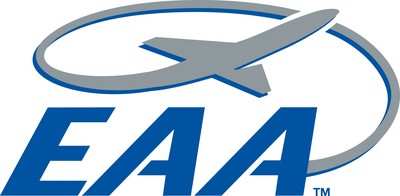Tue, Dec 27, 2016
EAA Comments On NavWorx Airworthiness Directive
FAA Airworthiness directives (AD) are issued when the FAA finds a condition that renders a type-certificated airplane un-airworthy. Sometimes ADs require immediate action, and at other times they may take place over a prescribed time span or require periodic inspections. However, the position has been taken for some time that they commonly do not apply to aircraft certified as experimental.

EAA has recently taken action regarding an AD that was applied to a non-certificated appliance. Here’s what EAA has to say:
EAA submitted comments on a proposed AD concerning NavWorx ADS-B systems that would set a troubling precedent involving FAA oversight of “non-certified” parts commonly used in experimental aircraft. The AD covers the company’s model ADS600-B units (part numbers 200-0012 and 200-0013) and model ADS600-EXP units. EAA objected to the inclusion of the latter model in the AD, as it is produced solely for the experimental and light-sport markets.
Thanks to previous advocacy work conducted by EAA, in 2012 the FAA clarified that airworthiness directives do not apply to experimental aircraft unless specifically noted in the AD’s applicability statement. In this case, experimental aircraft owners must in some way address any airworthiness concerns on the parts used in their aircraft that are outlined in the AD. But ADs are only used to address airworthiness concerns in items, such as an engine or propeller that is intended for use in type-certificated aircraft. ADs are never used against “non-certified” parts, which is why the proposed AD would set a troubling precedent.
The FAA only requires experimental aircraft owners to meet the performance standards of FARs 91.225 and 91.227 in order to satisfy the ADS-B out mandate. Therefore, the aircraft owner is the final authority in ensuring compliance.
“If a potential unsafe condition exists in any product installed on an aircraft operating in the NAS, EAA does not object to manufacturers and operators being alerted through appropriate means. But an airworthiness directive is not appropriate to address such an issue regarding a part that was never intended for installation in a type-certificated aircraft,” EAA Vice President of Advocacy and Safety Sean Elliott wrote in the comments. EAA requested that the FAA withdraw the AD for the ADS600-EXP and instead communicate safety concerns through non-regulatory special airworthiness information bulletins (SAIBs) or safety alerts for operators (SAFOs).
More News
From 2016 (YouTube Edition): The Canadian Forces Snowbirds Can Best Be Described As ‘Elegant’… EAA AirVenture 2016 was a great show and, in no small part, it was>[...]
Airplane Lunged Forward When It Was Stuck From Behind By A Tug That Was Towing An Unoccupied Airliner Analysis: At the conclusion of the air taxi flight, the flight crew were taxii>[...]
Aero Linx: International Stinson Club So you want to buy a Stinson. Well the Stinson is a GREAT value aircraft. The goal of the International Stinson Club is to preserve informatio>[...]
Request Full Route Clearance Used by pilots to request that the entire route of flight be read verbatim in an ATC clearance. Such request should be made to preclude receiving an AT>[...]
"Today's battlefield is adapting rapidly. By teaching our soldiers to understand how drones work and are built, we are giving them the skills to think creatively and apply emerging>[...]
 Classic Aero-TV: Pure Aerial Precision - The Snowbirds at AirVenture 2016
Classic Aero-TV: Pure Aerial Precision - The Snowbirds at AirVenture 2016 NTSB Final Report: Costruzioni Aeronautiche Tecna P2012 Traveller
NTSB Final Report: Costruzioni Aeronautiche Tecna P2012 Traveller ANN's Daily Aero-Linx (11.23.25)
ANN's Daily Aero-Linx (11.23.25) ANN's Daily Aero-Term (11.23.25): Request Full Route Clearance
ANN's Daily Aero-Term (11.23.25): Request Full Route Clearance Aero-News: Quote of the Day (11.23.25)
Aero-News: Quote of the Day (11.23.25)



